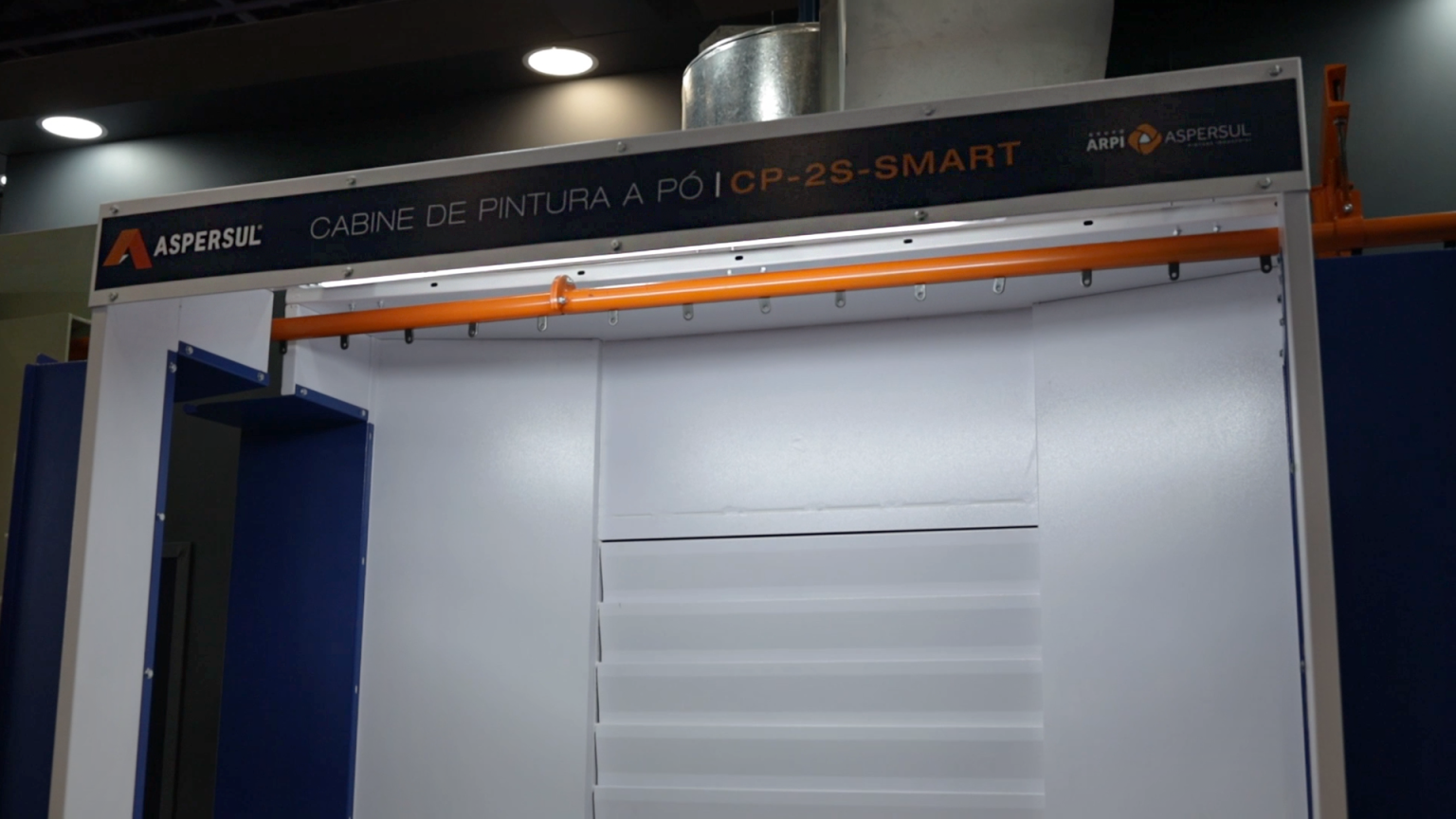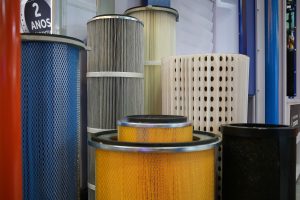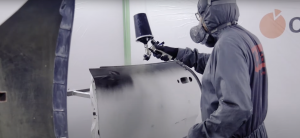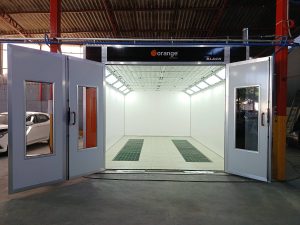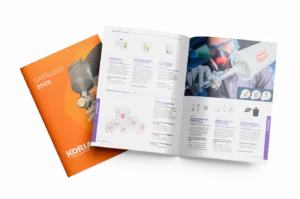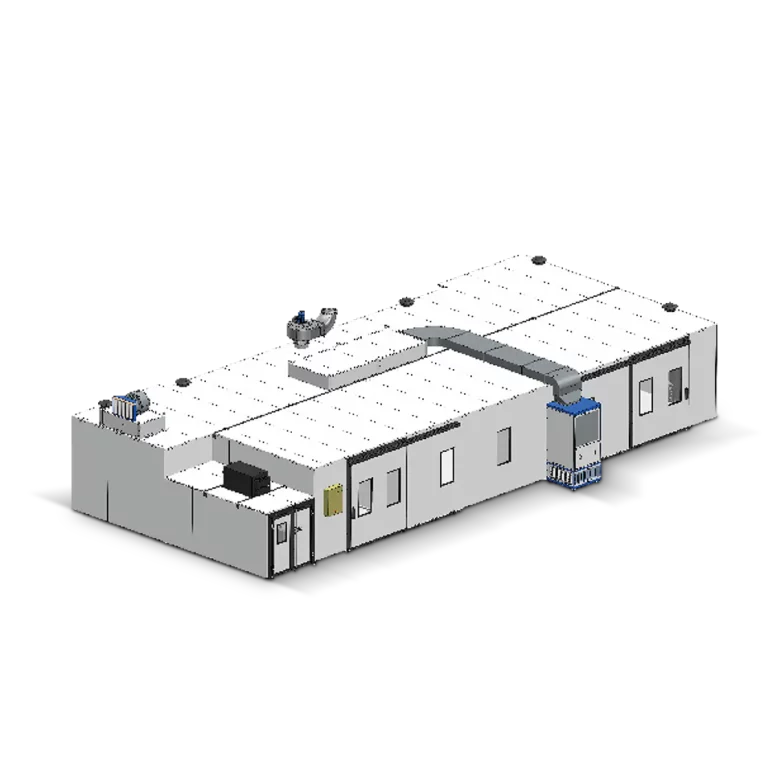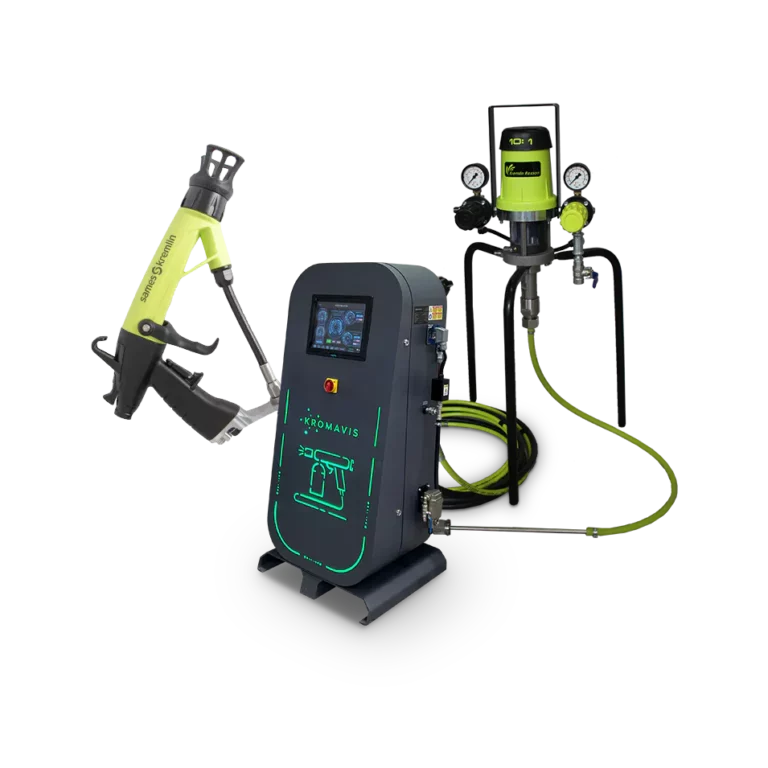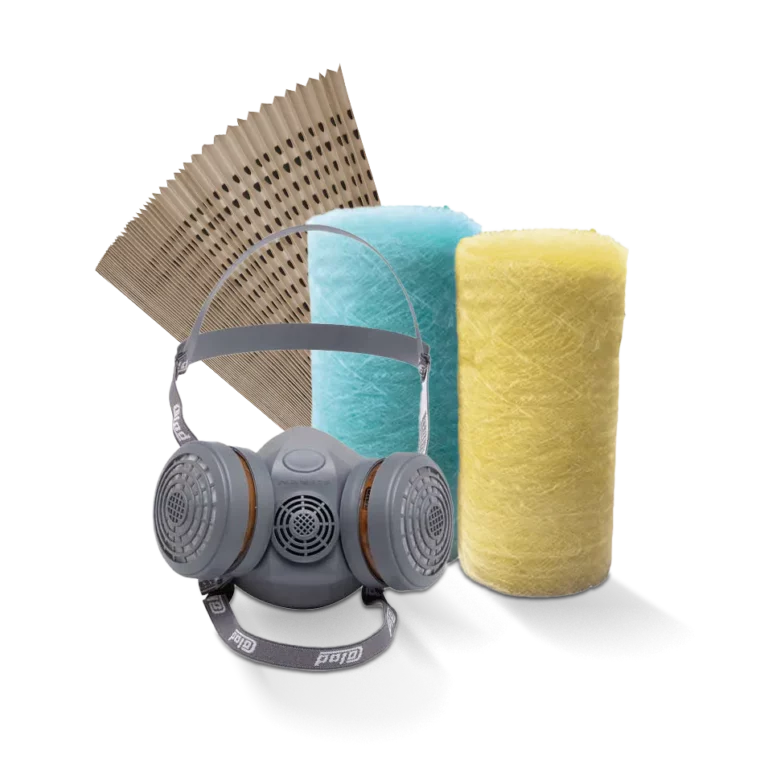Powder coating booths stand out for offering an innovative solution to achieve impeccable finish quality. In these booth models, filters are crucial components to achieve this quality, ensuring the air purity and safety necessary to achieve a perfect finish.
In this text, we will explain, in greater detail, the importance of filters for a powder coating booth, how they work, the main models, and the necessary considerations before choosing the ideal filter for your booth:
How filters work in powder coating booths
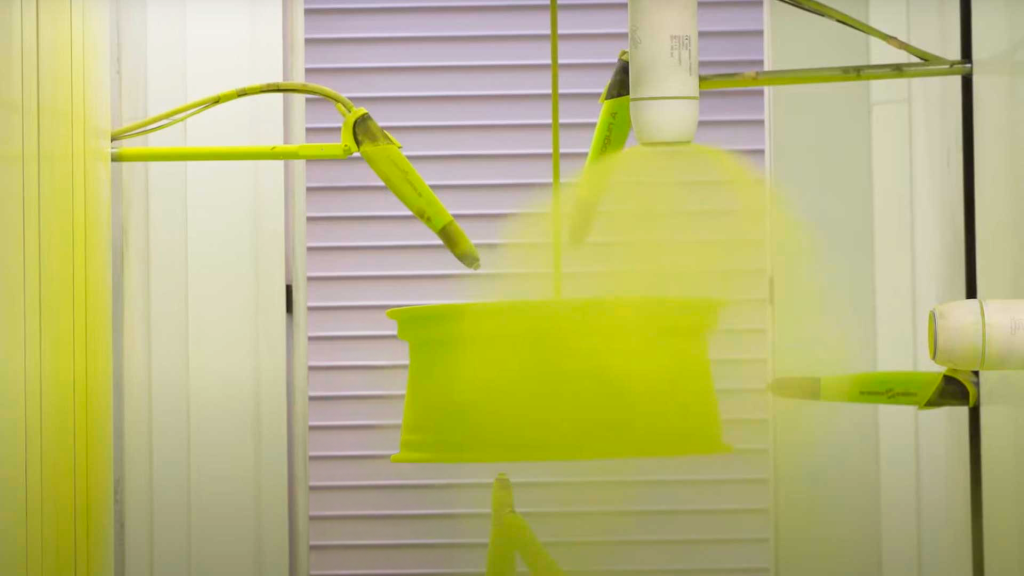
Like other booth models, powder coating booths also use a filtration system to capture dirt particles before they enter the booth, which improves the quality of the final finish.
However, a powder coating booth has unique processes that require different types of filters for specific functions. Let's learn a little more about them:
Input filters
The main function of this type of filter is to prevent impurities—such as dust and other dirt—from entering the booth, thus ensuring a clean environment for painting. Because they perform this essential function, they are usually located at the booth's air intake and, in most cases, have a high filtration capacity, including fine particles—essential for preventing dust contamination. These models are primarily made of polyester and have different densities to retain particles of varying sizes.
Output filters
Exit filters capture dust particles that didn't adhere to the part during the painting process, preventing environmental contamination. Typically located at the booth's air outlet, these filters not only prevent dust from being released into the external environment but can also be part of dust recovery systems, allowing for reuse. Exit filters also help maintain a safe working environment by minimizing the dispersion of potentially flammable or toxic dust into the air.
Considerations when choosing the correct filter?
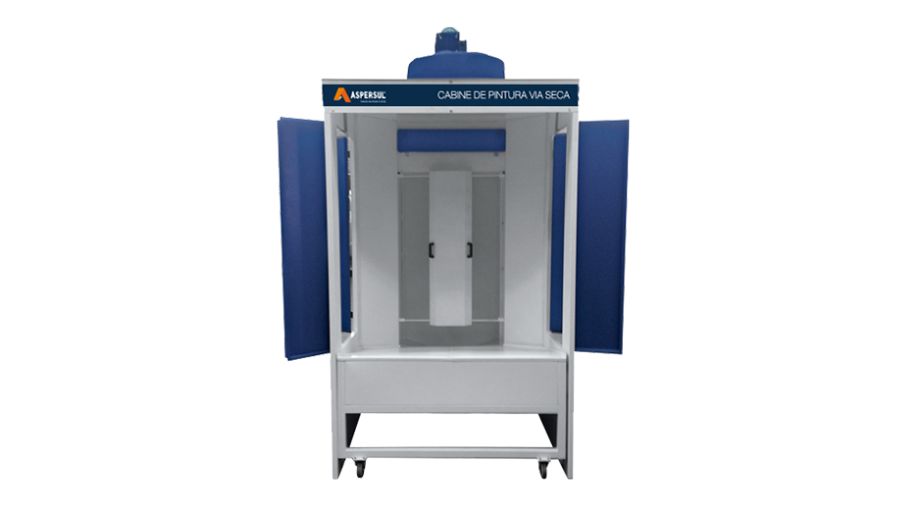
Choosing the right filter for a powder coating booth depends on several factors, let's look at the main ones:
Powder type
The powder used in painting can vary in size depending on the material used, so for thinner license plates, high-efficiency filters such as HEPA filters are required (High-Efficiency Particulate Air). Additionally, some dusts can be more abrasive, corrosive, and flammable, requiring filters made from materials that can withstand these conditions without losing filtering capacity or compromising safety.
Air flow
Air flow refers to the amount of air that passes through the cabin and filters in a given period of time. In other words, the filtering capacity must be in accordance with the flow generated by the exhaust system, which ensures that the dust is properly captured.
Therefore, undersized filters can cause airflow restrictions, increasing system pressure and consequently reducing cabin efficiency. Oversized filters, on the other hand, can be economically inefficient and take up more space than necessary.
Filtration efficiency
Another important consideration when choosing the ideal filter for your powder coating booth is its filtration efficiency, or its particle retention capacity. Depending on the application and environmental regulations, filters with an efficiency rating of up to 99.97% may be required for very small particles. There are different efficiency ratings, such as medium-efficiency or high-efficiency (HEPA) filters, depending on the desired level of exhaust air purity.
Useful life
A filter's lifespan is also an important consideration, especially regarding its cost-effectiveness. Most of the time, filter lifespan varies based on the filter material, the dust load generated by the process, and the filter's recovery and cleaning capabilities. Thus, filters with a shorter lifespan may require frequent replacement, increasing operating costs, while filters with a longer lifespan may have a higher initial cost but provide greater savings in the long run.
Types of filters
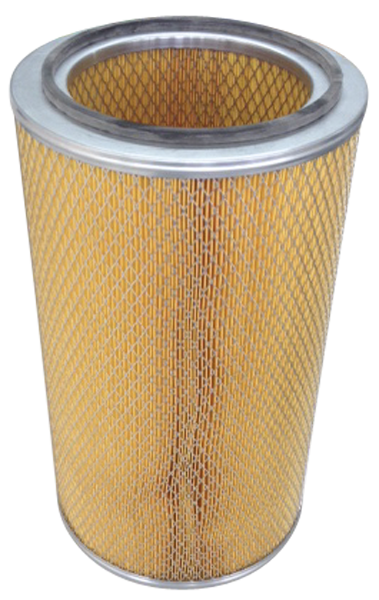
Below we will list the main types of filters used in powder coating booths and their main characteristics:
Bag filter
Filters are composed of cylindrical fabrics that allow air to pass through and retain dust particles. They are widely used in exhaust systems due to their filtration capacity and durability.
One of the bag filters' greatest advantages is their ability to operate in environments with high dust concentrations and retain fine particles. They are also durable, representing a good long-term cost-benefit ratio. Their main disadvantage is that they require regular maintenance, especially in environments with high dust volumes.
Cartridge filter
Cartridge filters can be used in processes requiring the retention of dry and solid particles, as they offer improved filtration efficiency, energy savings, and material reuse. However, these benefits are only possible through a design tailored to each situation. A polyester cartridge filter will only be fully utilized when it occupies the entire available filter area.
Foam filter (Filter foam)
These filters are made of thick, porous materials that allow air to pass through and capture suspended particles, as the density of the foam can be adjusted according to the size of the particles to be filtered.
Besides this customization, other advantages of this filter include its light weight, cost-effectiveness (depending on the material, it can be reused after washing), and easy replacement. The main disadvantages include its durability—shorter than bag or cartridge filters—and its inefficiency in capturing very fine particles, making it more commonly used as pre-filters.
HEPA (High-Efficiency Particulate Air) Filter
These filters are so named because they are capable of capturing up to 99.97% of particles as small as 0.3 micrometers. Made from fiberglass or other polymers, they offer extremely fine filtration and are recommended for environments requiring extremely pure air.
In addition to their high efficiency in removing fine particles, HEPA filters are essential in controlled environments or where air quality must be maintained at very high levels.
Their main disadvantage is their higher cost, they also require regular replacement and are not washable.
Pleated filter
Pleated filters offer a compact design, composed of folded materials (in an accordion shape) that provide a large surface area in a reduced space. Made of materials such as cellulose, polyester, or synthetic fibers, they are recommended for systems with more moderate airflow.
The main advantage of cartridge filters is their high particle retention efficiency—especially when made of electrostatic materials—and they are ideal for systems that require a high dust recovery rate. Their main disadvantage, however, is that their service life can be limited, especially when used with abrasive powders or in very humid environments.
The importance of filter maintenance
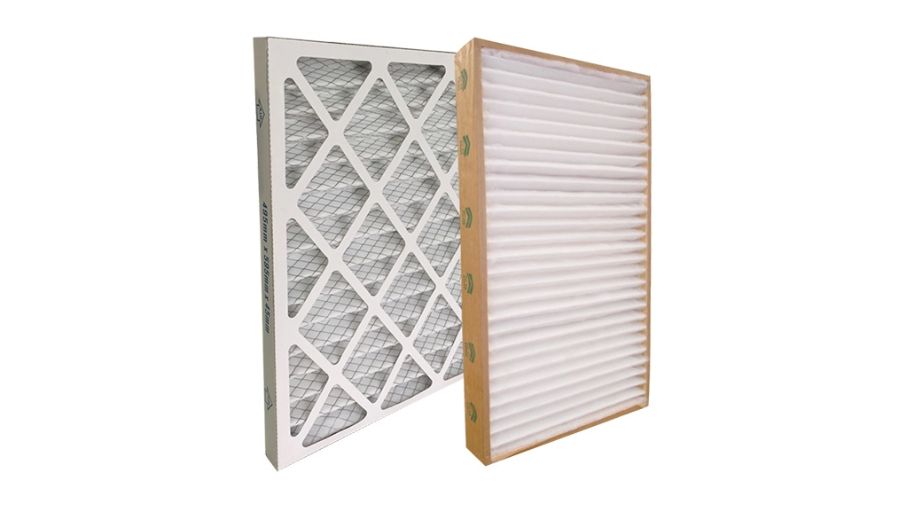
Proper filter maintenance is essential to ensure the proper functioning of the paint booth and the quality of the final finish. The frequency of cleaning or replacing filters varies depending on production volume and the type of powder used.
Proper maintenance of filters in powder coating booths is essential to ensure process efficiency, finish quality, and workplace safety. Key maintenance aspects include regular cleaning, visual inspection, and periodic filter replacement. Let's break each one down:
Regular cleaning
Regularly cleaning filters is essential to prevent excessive dust buildup, which can compromise airflow and reduce booth efficiency. Dirty filters prevent the ventilation system from functioning properly, resulting in reduced dust recovery, poor finish quality, and even overloading the exhaust system.
Visual Inspection
Visual inspection is a simple but essential practice for identifying potential problems before they become serious. It allows you to detect damage such as tears, holes, or excessive wear on filters, as well as verify the integrity of the filtration system as a whole.
Periodic exchange
Even with regular cleaning and inspections, all filters have a limited lifespan and will eventually need to be replaced. Periodic replacement is necessary to ensure the filtration system continues to operate at maximum efficiency, effectively capturing dust and maintaining a safe working environment.
The best filter models for your powder coating booth are at Arply, access our page and discover our wide range of filters. If you have any questions, contact one of our experts; they'll find the ideal filter for your powder coating booth.
Did you like this post? Share it with your friends or on social media. For more tips on painting and its equipment, visit our blog, always with exclusive content.
